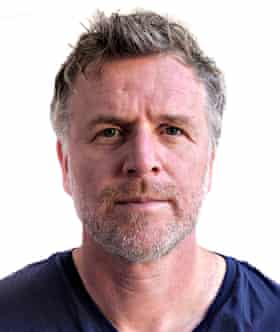In April 2019, a beluga whale appeared alongside fishing boats off the coast of Norway. He was wearing a harness. A fisherman called Joar Hesten freed him, and saw the harness had stamped on it “equipment of St Petersburg”. The media went crazy, with talk of a “spy whale”, and the creature was named Hvaldimir, a combination of hval, the Norwegian word for whale, and Vladimir, a nod to Russia’s President Putin.
The whale became famous. There were Instagram videos of him playing in Hammerfest harbour in front of crowds. One woman dropped her phone in the water and the whale fetched it for her. He would bring up bones from the depths to show people, almost like little gifts. It became this huge moment on social media: everyone in the country fell in love with the whale. Even the hardcore fishing villages melted for Hvaldimir.
I wasn’t that excited about it at the time, and the whale eventually moved on. Nobody heard about Hvaldimir for a long time until last summer, when he appeared in the fjord next to Joar Hesten’s fishing village. There was something so touching about it: had this whale tracked down his saviour to make a new home next to his village?
Hvaldimir now lives under the nets of nearby fish farms in the Bodo region. He’s still a wild animal – he’s still hunting – but it’s not an ideal location. There are lots of small boats moving through the water, and he has been injured before by their propellers.
Many different organisations were working on the question of what to do about Hvaldimir. They all wanted a piece of him. But we – writer Nils Anker and I – wanted to know the story of Hesten, the man who the whale had followed. He is a traditional fisherman, a straightforward guy. In fact, he’s a former whaler. I wanted his take on the public obsession in Norway.
He basically thinks there is a lot of fuss. He calls Hvaldimir’s fans the “whale hippies”. But he’s also working on how to get Hvaldimir away from the farms and into the wild. I photographed him for a magazine story and I got a chance to meet the whale myself.
I have been diving for as long as I have been taking photographs – I took both up as a young man. But only 10 years ago did I start taking free-diving more seriously. I was on a job with Borge Ousland, the first man to cross both the north and south poles on skis unsupported. I watched him dive into the water without equipment, without any of the gear I was used to having. He was like a seal. After that, I sold all my equipment and made free-diving my life.
Free-diving is a process: you have to clear your head, breathe deeply, and lower your heart rate. For some reason, it makes the world move much more slowly, and you see so much more. I can get closer to the animals without the burden of my equipment and the artificial sounds it makes. Often, an animal will spot you, disappear, and then reappear 10 seconds later, because it understands that you are not a predator. When you’re photographing wild animals, you have to approach them on their terms. Diving without equipment allows you to do that.
Waiting to shoot Hvaldimir took a long time. I spent about 11 hours in my wetsuit over three days, all for about 50 minutes in the water. But the experience of being that close to him was amazing.
I love this photograph: it’s my favourite of the series. It was such an intimate moment: he swam up towards my camera, and then paused, just where the light hit him. He was looking straight at me – he looks so gentle, kind and perhaps a little sad. People always remark on belugas smiling – but that’s just their anatomy. Someone once wrote about the Mona Lisa having the smile of a whale, there’s something so mysterious about it.
In my work as a photojournalist, I usually cover just the bad stuff: pollution, plastics and waste when doing stories from the oceans. It was great to have the chance to cover something positive.
Aleksander Nordahl is a finalist in the wildlife and nature category of the Sony World Photography awards 2021. See more of his images on Instagram at @freedivingnorway.

Born: Lofoten Islands, Norway, 1971.
Trained: Photojournalism at the Institute of Journalism, Norway.
Influences: “People who tell stories that have not been told before, from photographers to fishermen to journalists.”
High point: “Now, after 30 years, having the opportunity to use my journalistic training to do what I love to do: being in the ocean.”
Low point: “Seeing, through my work, the damage that we humans have done to the oceans.”
Top Tip: “Hang in there.”